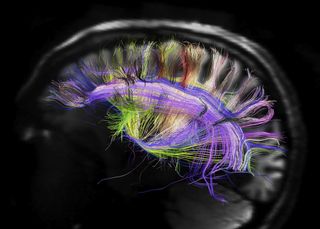Momentum Builds for Obama's Brain Initiative

SAN DIEGO — A new initiative to understand the human brain, announced by President Barack Obama earlier this year, has left people wondering exactly what its goals will be. The project's leaders provided some answers and a healthy dose of enthusiasm here at the Society for Neuroscience meeting Nov. 9-13.
The BRAIN Initiative (short for Brain Research through Advancing Innovative Neurotechnologies) is a collaborative effort between government agencies, including the National Institutes of Health (NIH), the National Science Foundation (NSF), the Defense Advanced Research Projects Agency (DARPA) and private funding organizations.
The ambitious project — the details of which are still being worked out — aims to speed development of new technologies for understanding the brain's structure and function. [5 Crazy Technologies That Are Revolutionizing Biotech]
For example, the project's funding would support technologies such as recording brain signals from many neurons in parallel, or methods for activating neurons using pulses of light. Neuroscientists had an opportunity to offer feedback at the conference about areas they felt the project should address.
The 'next great American project'
Obama has called the BRAIN Initiative "the next great American project," and indeed, that was the mood among the panel members here. Thomas Insel, director of the NIH's National Institute of Mental Health, compared the BRAIN Initiative with the Apollo program and the human genome project. But Insel stressed there is no clear timetable for the research.
The initiative leaders also emphasized the importance of collaboration, and groups funded by the project will be expected to share their technologies and findings with each other and the public.
Sign up for the Live Science daily newsletter now
Get the world’s most fascinating discoveries delivered straight to your inbox.
Government and private organizations have pledged a total of $232 million to get the project off the ground. DARPA will contribute $50 million, the NIH will contribute $40 million and the NSF will contribute $20 million for the fiscal year 2014. The Allen Institute for Brain Science, the Howard Hughes Medical Institute (HHMI), the Kavli Foundation and the Salk Institute for Biological Studies will contribute the remaining $122 million, some of which will become an annual contribution.
The initiative has garnered both praise and criticism. Many believe it is a vital opportunity to raise the profile of neuroscience. Some worry it will draw too much funding away from other important research, while others say it doesn't have enough funding to accomplish the goals already set out.
The initiative's leaders said the initial funding is meant to be symbolic, designed to attract attention rather than provide comprehensive funding for its ambitious goals.
Roadmap for the future
The NIH request for applications (RFA) will be out within a month, Insel said. The NSF, too, will be calling for applications soon.
DARPA's deputy director of the Defense Sciences Office, Geoffrey Ling, expressed the agency's steadfast support of the initiative. "All of us want to cure Alzheimer's disease, all of us want to cure multiple sclerosis, all of us want to cure traumatic brain injury," said Ling, who is a neurologist, adding, "We have not yet. The timing is right to take it to the next level."
The defense agency has two main priorities for its involvement: developing better diagnostics and treatments for neuropsychiatric disorders, and restoring memory.
After Obama announced the initiative in April, the NIH put together a working group to discuss timetables, milestones and costs of the research. The group released an interim report Sept. 16, and plans to release a final report in June 2014.
Europe has embarked on its own brain initiative, a $1.3 billion (1 billion euros) project known as the Human Brain Project. Directed by the École Polytechnique Fédérale de Lausanne, in Switzerland, with funding from the European Union, the 10-year project aims to build a computer model of the human brain.
Insel expressed optimism for the future of concerted efforts to understand the brain. "It's beginning to feel like a global movement," he said.
Follow Tanya Lewis on Twitter and Google+. Follow us @livescience, Facebook & Google+. Original article on LiveScience.

Most Popular



